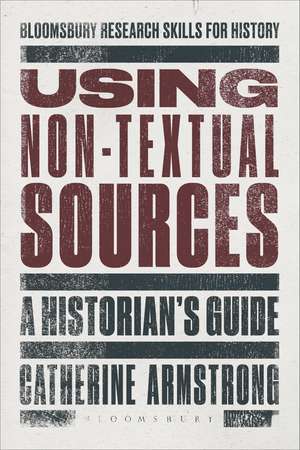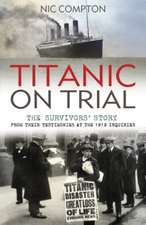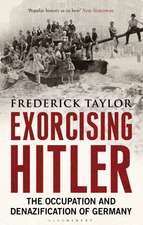Using Non-Textual Sources: A Historian's Guide: Bloomsbury Research Skills for History
Autor Dr Catherine Armstrongen Limba Engleză Paperback – 16 dec 2015
| Toate formatele și edițiile | Preț | Express |
|---|---|---|
| Paperback (1) | 177.32 lei 6-8 săpt. | |
| Bloomsbury Publishing – 16 dec 2015 | 177.32 lei 6-8 săpt. | |
| Hardback (1) | 596.33 lei 6-8 săpt. | |
| Bloomsbury Publishing – 16 dec 2015 | 596.33 lei 6-8 săpt. |
Preț: 177.32 lei
Preț vechi: 206.69 lei
-14% Nou
Puncte Express: 266
Preț estimativ în valută:
33.93€ • 35.59$ • 28.25£
33.93€ • 35.59$ • 28.25£
Carte tipărită la comandă
Livrare economică 01-15 aprilie
Preluare comenzi: 021 569.72.76
Specificații
ISBN-13: 9781472506535
ISBN-10: 1472506537
Pagini: 160
Ilustrații: 20 bw illus
Dimensiuni: 156 x 234 x 13 mm
Greutate: 0.27 kg
Editura: Bloomsbury Publishing
Colecția Bloomsbury Academic
Seria Bloomsbury Research Skills for History
Locul publicării:London, United Kingdom
ISBN-10: 1472506537
Pagini: 160
Ilustrații: 20 bw illus
Dimensiuni: 156 x 234 x 13 mm
Greutate: 0.27 kg
Editura: Bloomsbury Publishing
Colecția Bloomsbury Academic
Seria Bloomsbury Research Skills for History
Locul publicării:London, United Kingdom
Caracteristici
Provides practical advice for university history students on the range of non-textual sources they'll encounter
Notă biografică
Catherine Armstrong is Lecturer in American History at Loughborough University, UK. She is the author of Writing North America in the Seventeenth Century (2007) and, along with Laura M. Chmielewski, The Atlantic Experience: People, Places, Ideas (2013).
Cuprins
Introduction1. Borrowing from Other Disciplines2. Reading Images3. Film, TV and Audio Sources4. Material Culture and the Built Environment5. Practical ApplicationsNotes BibliographyIndex
Recenzii
Armstrong's work is an excellent point of entry into material for the analysis of non-textual sources. Written by an enthusiastic historian, it will be of great use to students, but can also serve as an inspiration to other researchers.
Students eager to find a fresh way to study history should read this book. Written in a clear, accessible style, it applies essential cultural theory to a dazzling array of examples from many continents and periods, from pottery and portraits to films and interviews. One of Catherine Armstrong's outstanding qualities as a historian is that far from talking down to her readers she encourages them to join her on an exciting and surprising voyage of historical discovery. As such, this is both a useful handbook and an extended essay, fizzing with interest and enthusiasm, that one can read with pleasure from start to finish.
Armstrong's Using Non-Texual Sources is an ambitious, concise, clearly structured and lucidly written introduction to the use of visual, aural, and material sources for the writing of history. Based upon a broad and deep knowledge of the relevant interdisciplinary literatures, there is no comparable textbook available for undergraduate historical methods courses. Its intended audience will find a persuasive argument for why they should look beyond textual sources as well as a detailed guide to best-practices in their analysis of film, paintings, cartoons, music, film, and artefacts.
Students eager to find a fresh way to study history should read this book. Written in a clear, accessible style, it applies essential cultural theory to a dazzling array of examples from many continents and periods, from pottery and portraits to films and interviews. One of Catherine Armstrong's outstanding qualities as a historian is that far from talking down to her readers she encourages them to join her on an exciting and surprising voyage of historical discovery. As such, this is both a useful handbook and an extended essay, fizzing with interest and enthusiasm, that one can read with pleasure from start to finish.
Armstrong's Using Non-Texual Sources is an ambitious, concise, clearly structured and lucidly written introduction to the use of visual, aural, and material sources for the writing of history. Based upon a broad and deep knowledge of the relevant interdisciplinary literatures, there is no comparable textbook available for undergraduate historical methods courses. Its intended audience will find a persuasive argument for why they should look beyond textual sources as well as a detailed guide to best-practices in their analysis of film, paintings, cartoons, music, film, and artefacts.










